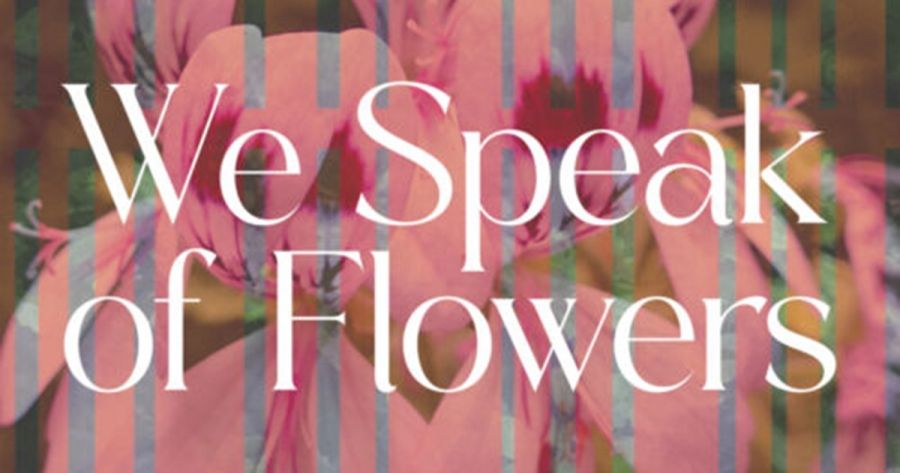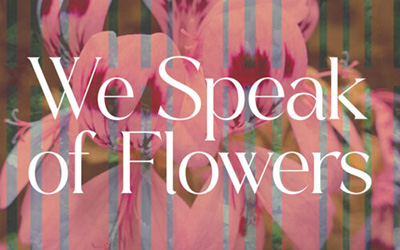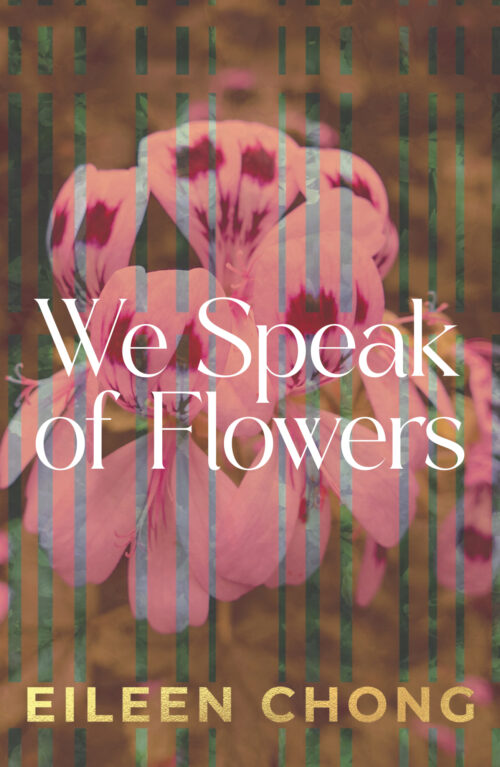
- Free Article: No
- Contents Category: Poetry
- Review Article: Yes
- Article Title: Words still rise
- Article Subtitle: An adroit and moving collection
- Online Only: No
- Custom Highlight Text:
In Li-Young Lee’s ‘Furious Versions’, a poem reckoning with his family’s exile, there is a question: ‘How then, may I / speak of flowers / here, where / a world of forms convulses.’ Eileen Chong draws these lines into her sixth book of poetry as an epigraph, reorienting them to find her title, expanding Lee’s first-person singular into the plural ‘we’, its question into statement. This drawing-into-connection and shifting is central to Chong’s poetics, established in her striking début collection, Burning Rice (2011), which includes an image linking women, flowers, and power. ‘The Flower of Forgetting’ ends: ‘Women can be strong. Flowers too.’
- Featured Image (400px * 250px):

- Alt Tag (Featured Image): Felicity Plunkett reviews ‘We Speak of Flowers’ by Eileen Chong
- Book 1 Title: We Speak of Flowers
- Book 1 Biblio: University of Queensland Press, $24.99 pb, 113 pp
- Book 1 Cover Small (400 x 600):

- Book 1 Cover (800 x 1200):

- Book 1 Readings Link: https://www.readings.com.au/product/9780702268625/we-speak-of-flowers--eileen-chong--2025--9780702268625#rac:jokjjzr6ly9m
When Chong speaks of flowers through the act of writing poetry, she is conscious of the ethical question, like Lee’s, of poetry’s place alongside violence and grief. This question has its own lineage, and Chong shares the ambivalence of many poets. Two examples: Pablo Neruda refused metaphor but insisted on poetry in a poem about the Spanish Civil War, ‘I’m Explaining a Few Things’: ‘and the blood of children ran through the streets / without fuss, like children’s blood’. Yet in the same poem (translated by Nathaniel Tarn), he evokes Madrid before the war and speaks of flowers: ‘My house was called / the house of flowers, because in every cranny / geraniums burst.’ W.B. Yeats, in ‘On Being Asked for a War Poem’ (1915), argued: ‘I think it better that in times like these / A poet’s mouth be silent’. Yet within a year he described the ‘terrible beauty’ of Ireland’s struggle for liberty in ‘Easter 1916’.
Lineage, connection, and ambivalence are all themes in Chong’s work, but they are more than themes. They are essential to her poetic method. Through Chong’s work runs an exploration of what poetry is and can do. ‘If Your Poem’ from Rainforest (2018) begins ‘wants to be about horses, / let it be about horses’.
The more perfunctory, taxonomical approach to poetry of listing its themes is misaligned with poetry as deftly woven, allusive, and layered as Chong’s. Yes, flowers recur, dreams recur, hunger and the preparation and sharing of meals recur, the lives of women and the life of the body. Yet metaphor draws these together in combinations that shape and shade each idea. A poem may begin with horses, but with them will arrive ‘the trees, / the sky, the earth, you standing there, / me watching’.
The making and breaking of connections, central to Chong’s work, is enacted through her meticulous work with the line. The first four words of the collection – ‘a singular, cracked voice’ – are placed at the top right of the page, followed, after the pause of an empty page, low and to the left, by ‘words matter, can still rise’. A time of silent reflection, which the reader is invited to share, is followed by words’ return. Silence is part of the Buddhist mourning practices that Chong outlines in a prefatory note. A liminal space akin to one the soul inhabits for the forty-nine days after death, silence is the pause before and after words, an aspect of dignity and creative necessity. Echoing Claude Debussy, Miles Davis described music as ‘the space between the notes. It’s not the notes you play; it’s the notes you don’t play.’
The lines of any poem are connected to time, as well as to silence and speaking. The beauty of a flower, and of life, writes Chong in her preface, ‘lies precisely in its transience’. Chong’s lines work to express the movement of time. A line break can suspend an image, hold it still the way memory does. Kazim Ali, in his inventive essay ‘On the Line’, writes: ‘Something exists in the here and now with no dependence on before or after.’
Chong uses the line to augment her poems’ music, such as the onomatopoeic balance of phrases opening ‘11’: ‘Another summer. Insects thrum.’ An end-line pause can create tension, such as the opening of ‘51’: ‘The children searched for the skeletons’, an image sustained for its eerie moment before its continuation in the next line, ‘of leaves in dead matter.’ The closeness of life and death, part of the experience of mourning, is weighed in the couplet. A broken line can let one note be held, as when the harmony of the music and image ‘even leaves’ is held in its own line before the harsher following line ‘have teeth’ (‘33’).
Occasionally, there is the jolt of a dark joke, as in ‘75’, when the speaker remembers that it was her grandfather ‘who ate the first meal I prepared. He died.’ The next line continues ‘that same year’, but the mordant moment cannot be dispelled. Whether lithe, sinuous, or clipped, turning back on itself, snapped, or stretched, Chong’s line has never been more restive and varied than in this adroit and moving collection.
I relish this expertise so much that I miss the line breaks in the prose poems, of which there are more in We Speak of Flowers than in previous collections. In the place of line breaks, velocity and looseness suit these poems’ impressionistic mode. These limber assemblages gather flickering images of dreams and memories with impressions of the present: a locked gate, a braceleted arm, oysters tussling with grit, the first Chinese people arriving in Australia.
In a series of prose poems (‘36’ to ‘47’), line breaks are indicated in all but the two shorter framing poems. By gesturing towards line breaks with a symbol ‘/’, Chong creates a tension between their absence and presence. This aligns neatly with the collection’s motifs: spectral presences, memory, speaking to and with the dead.
The conceit of We Speak of Flowers is that this is one broken poem, an extended fractured elegy to the poet’s ancestors, in ‘101 layered fragments that can be read in any order’. The more anarchic reader may not wait for nor require such an invitation to read and reread, dip in and out of this work, when so many lines are exquisitely measured and emotional resonant.
What is it to speak of flowers? Terri Ann Quan Sing has described the way Chong’s ‘sensual language draws us back to the pleasures of living’. To speak of flowers is to acknowledge that after hunger (‘my only inheritance’, Chong writes in ‘27’), there may be feasting. To affirm that after necessary or imposed silence there may be fearless and joyful words and, as the preface reminds us, ‘an end is also a beginning’.


Comments powered by CComment